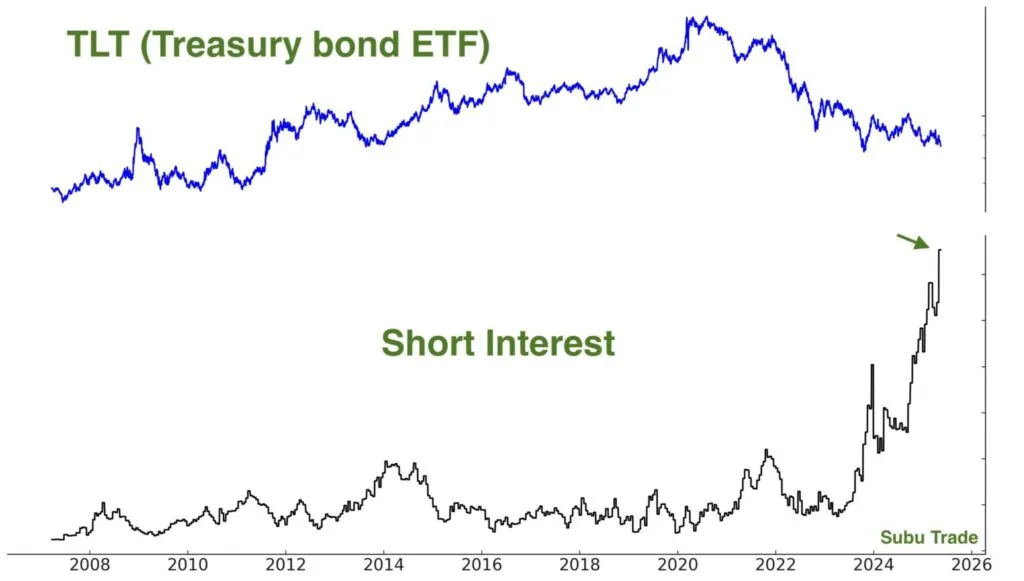On June 25th, the Federal Reserve announced a significant adjustment to the Supplementary Leverage Ratio (SLR). While not a headline-grabbing event for everyone, this technical shift has substantial implications for the U.S. Treasury market and the financial system. It could create significant demand for government bonds, enhance market liquidity, and potentially contribute to lower yields, especially as economic growth shows signs of slowing.
Contents
This move by the Fed signals a shift in how major banks manage their balance sheets and capital. By easing specific capital requirements related to low-risk assets like U.S. Treasuries, regulators are effectively encouraging banks to hold more government debt. This has the potential to reshape market dynamics and influence investment strategies.
Understanding the SLR and Why It Matters
The Supplementary Leverage Ratio (SLR) was introduced after the 2008 Global Financial Crisis as a safeguard to limit excessive bank leverage. The initial rule was straightforward: banks had to hold a certain amount of capital relative to their total assets, regardless of the risk level of those assets. Crucially, this meant holding a low-risk asset like a U.S. Treasury bond required the same capital buffer as a much riskier corporate loan. This structure inadvertently discouraged major banks from holding large quantities of safe assets like Treasuries, particularly during periods of stress.
In a notable reversal, the Federal Reserve, in coordination with the FDIC and the OCC, announced a recalibration of the SLR requirement on June 25th. The new rule adjusts the enhanced SLR (eSLR) add-on for the largest banks, known as Global Systemically Important Banks (G-SIBs), linking it more closely to international standards. This change reduces the regulatory burden tied to low-risk assets for these major U.S. banks, effectively opening up significant capacity on their balance sheets.
According to estimates from Goldman Sachs, these proposed changes could unlock between $5.5 trillion and $7.2 trillion in bank balance sheet capacity.
 Estimated bank balance sheet capacity unlock
Estimated bank balance sheet capacity unlock
To put this figure into perspective, the increase in balance sheet capacity is roughly equivalent to 25% of the current U.S. GDP. The Federal Reserve’s member banks, including giants like JP Morgan, Bank of America, Wells Fargo, and Citigroup, are positioned to benefit most directly from this change. Most importantly, this regulatory adjustment paves the way for increased participation by these banks in repo financing and direct purchases of U.S. Treasuries, particularly during times when market liquidity is strained.
While Treasuries and repo offer relatively modest returns compared to riskier assets, their low-risk profile makes them attractive for banks needing to meet capital requirements and bolster liquidity. In an environment characterized by tight credit spreads and uncertain loan demand, banks can now allocate more capital to these safer options without facing punitive regulatory constraints.
The Impact on the Treasury Market
So, how does this technical regulatory change influence the multi-trillion-dollar U.S. Treasury market? As previously discussed in our Daily Market Commentary, Federal Reserve Chairman Jerome Powell had hinted at the potential for this rule change to address liquidity concerns in the Treasury market. Powell noted that the amount of outstanding Treasuries has grown significantly faster than the capacity of financial institutions to intermediate them, suggesting that reducing the bindingness of the SLR was a potential solution.
Since 2020, the bond market has faced headwinds, with yields generally rising due to inflationary pressures, Federal Reserve interest rate hikes, and a massive increase in government debt issuance. However, major Wall Street banks have been less active buyers than they might otherwise be, constrained by the very leverage rules now being modified. This limited bank demand has contributed to keeping yields higher, particularly for longer-term bonds.
With the adjusted SLR, banks gain the flexibility to deploy their excess capital into Treasury holdings without hitting regulatory leverage limits. This newfound source of demand could absorb a significant portion of the new Treasury debt issued by the government. The likely result is downward pressure on Treasury yields, especially during periods of market stress or economic uncertainty when the demand for safe assets typically increases. In essence, this reform could act as a stabilizer for the Treasury market, reducing the risk of liquidity crises similar to those seen in September 2019 (repo market) or March 2020 (pandemic-induced dislocation).
Furthermore, the SLR change also has related effects on other bank capital requirements, specifically Total Loss Absorbing Capacity (TLAC) and Long-Term Debt (LTD). These rules, designed to ensure large banks can fail without destabilizing the system, are also tied to leverage ratios. The new proposal is expected to reduce TLAC and LTD requirements by approximately 5% and 16% respectively, freeing up roughly $95 billion in wholesale debt capacity across the five largest U.S. banks. This reduction in required debt translates into lower funding costs for banks, providing yet another incentive to reallocate capital towards U.S. Treasuries and repo financing.
What This Means for Your Portfolio
From an investment perspective, this SLR reform underscores that regulatory policy is a critical factor influencing asset markets, often as much as monetary policy (like interest rate decisions). While most investors focus on the Fed’s target rate, technical rules like the SLR significantly shape capital flows, risk appetites, and liquidity conditions within the financial system.
With banks now likely to increase their holdings of U.S. Treasuries, investors should consider the potential for sustained downward pressure on long-term yields. This effect could be particularly pronounced during “risk-off” periods when the general market demand for safe assets like Treasuries intensifies.
Adding to this potential for lower yields is the unusually large short position currently held against U.S. Treasury bonds, particularly represented by the popular 20-year Treasury Bond ETF (TLT). As we previously discussed in The TLT Short Trade Is Crowded, short interest in TLT has reached historic levels.
 Chart showing record short interest in TLT Treasury bond ETF
Chart showing record short interest in TLT Treasury bond ETF
A significant short position creates the potential for a “short squeeze” – a rapid rise in price (and fall in yields) if short sellers are forced to buy back bonds to cover their positions. While this crowded trade doesn’t guarantee a bond rally, the combination of increased bank demand due to SLR changes and the potential for a short squeeze significantly tilts the risk-reward profile in favor of holding longer-duration fixed income assets.
For equity markets, lower long-term yields have mixed implications. Historically, lower yields can be supportive of growth stocks by making future earnings more valuable in present terms. However, if yields are falling sharply because the economy is slowing rapidly or heading towards a recession, the positive effect of lower rates can be outweighed by concerns about corporate earnings and economic demand.
Effective portfolio construction always begins with robust risk management. Given the potential implications of the SLR change and the existing market positioning, the risk associated with being short U.S. Treasury bonds appears to be increasing.
Bottom Line
The Federal Reserve’s proposed adjustments to the Supplementary Leverage Ratio are more than just technical regulatory tweaks; they represent a deliberate effort to strengthen the underlying infrastructure of the Treasury and repo markets. By giving banks greater flexibility to hold safe assets, the Fed is engineering a quiet but potentially powerful increase in the demand for U.S. government bonds.
For investors, this reform suggests improved market liquidity, a potential for lower Treasury yields, and a financial system that may be better equipped to handle stress. However, as with any significant regulatory change, the ultimate impact will depend on the details of implementation and whether any unintended consequences emerge. Understanding these nuances, even in seemingly technical rules like the SLR, is crucial for navigating the markets effectively.
For further insights into market developments and their implications for your portfolio, explore our related articles.







































